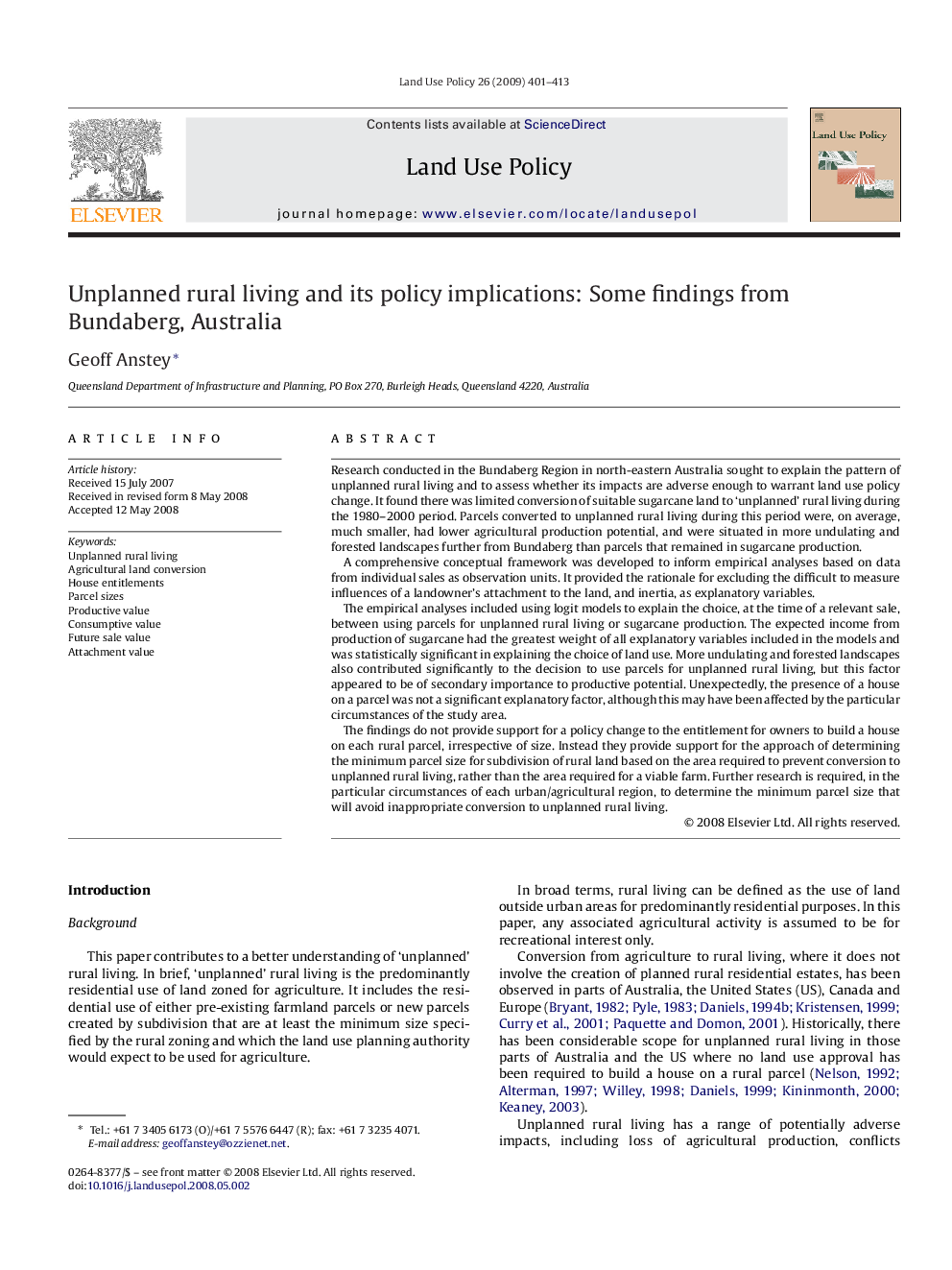| Article ID | Journal | Published Year | Pages | File Type |
|---|---|---|---|---|
| 93586 | Land Use Policy | 2009 | 13 Pages |
Research conducted in the Bundaberg Region in north-eastern Australia sought to explain the pattern of unplanned rural living and to assess whether its impacts are adverse enough to warrant land use policy change. It found there was limited conversion of suitable sugarcane land to ‘unplanned’ rural living during the 1980–2000 period. Parcels converted to unplanned rural living during this period were, on average, much smaller, had lower agricultural production potential, and were situated in more undulating and forested landscapes further from Bundaberg than parcels that remained in sugarcane production.A comprehensive conceptual framework was developed to inform empirical analyses based on data from individual sales as observation units. It provided the rationale for excluding the difficult to measure influences of a landowner's attachment to the land, and inertia, as explanatory variables.The empirical analyses included using logit models to explain the choice, at the time of a relevant sale, between using parcels for unplanned rural living or sugarcane production. The expected income from production of sugarcane had the greatest weight of all explanatory variables included in the models and was statistically significant in explaining the choice of land use. More undulating and forested landscapes also contributed significantly to the decision to use parcels for unplanned rural living, but this factor appeared to be of secondary importance to productive potential. Unexpectedly, the presence of a house on a parcel was not a significant explanatory factor, although this may have been affected by the particular circumstances of the study area.The findings do not provide support for a policy change to the entitlement for owners to build a house on each rural parcel, irrespective of size. Instead they provide support for the approach of determining the minimum parcel size for subdivision of rural land based on the area required to prevent conversion to unplanned rural living, rather than the area required for a viable farm. Further research is required, in the particular circumstances of each urban/agricultural region, to determine the minimum parcel size that will avoid inappropriate conversion to unplanned rural living.
